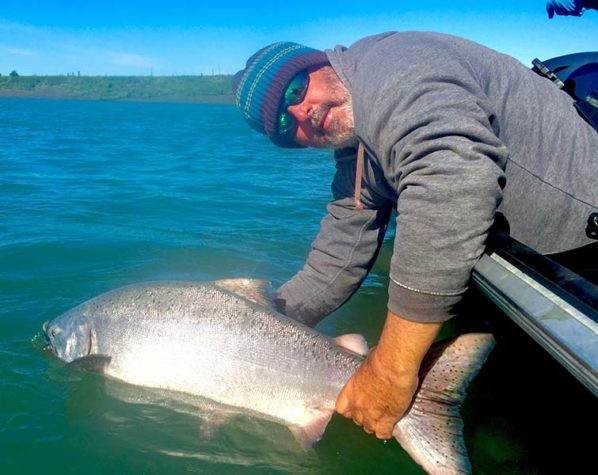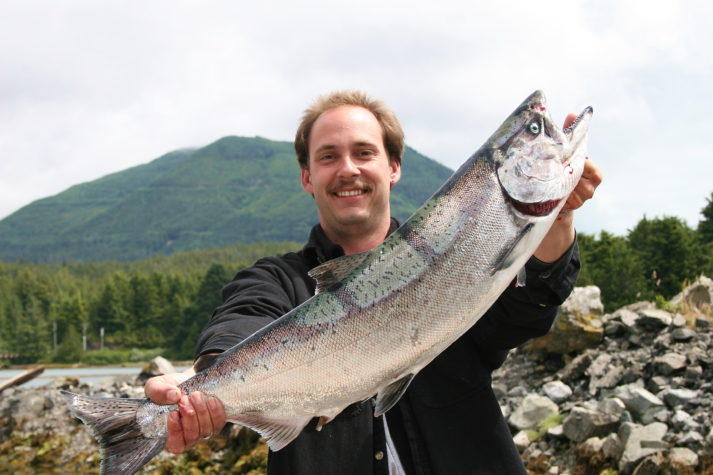Top Fishing Trips
Oregon’s Tillamook Bay – Where Fat Chinook Salmon Reign Supreme
America’s Pacific coast is home to a number of bays and estuaries, many of them ideal fishing locales. Oregon’s Tillamook Bay is, in fact, both a bay and an estuary, mixing waters from a number of rivers with water from the Pacific ocean and providing an ideal salmon spawning ground. Multiple types of salmon call the Tillamook Bay and its tributaries home, but the Chinook salmon lives up to its alternate namesake here and is truly “king”.
Chinook in the Tillamook
Chinook salmon are Oregon’s state fish, as evidenced by the supremely large numbers that are produced in hatcheries and the wild, statewide. The Tillamook Bay specifically, enjoys highly productive tributary rivers, particularly the Tillamook and the Trask, and provides a great variety of both saltwater and freshwater fishing locations. Salmon spawned in freshwater typically feed in the Tillamook Bay for a period of time before returning to the Pacific to mature and then migrate back to their birthplaces to spawn still more salmon.
 More salmon, in the case of the Tillamook Bay and its surrounding areas, is a vast understatement. In fact, as many as 25,000 fish are spawned in the two spawning runs every year. Spring spawning results in much lower numbers, but these springers are preferred by many anglers for their supposed lighter flavor. Fall spawning, on the other hand, produces the numbers that made Oregon and the Tillamook Bay famous, and it is here that typically large Chinook salmon can reach epic proportions.
Fall Chinooks have been known to reach weights in excess of 50 pounds on rare occasions, though weights in the 30s are more common. Even an average-sized Chinook for the area, at 20 pounds plus, makes for a good day for any salmon angler. When one considers that a fairly large portion of a Chinook salmon is usable, along with the fact that Chinook is prized for both its flavor and its nutritional benefits, the reward for outsize salmon far outweighs the effort in catching it.
Finding Monster Chinooks
Locals boast many so-called tried-and-true fishing spots, each with its own almost code name, and each guaranteed to put the others to shame. Similarly, a vast array of failproof methods featuring various rods, lures, bait fish, hunting tricks and more, are enough to confuse any angler wishing to catch a trophy Chinook. So, how does one separate what works from what doesn’t? Simply put, leave it to the professionals.
More salmon, in the case of the Tillamook Bay and its surrounding areas, is a vast understatement. In fact, as many as 25,000 fish are spawned in the two spawning runs every year. Spring spawning results in much lower numbers, but these springers are preferred by many anglers for their supposed lighter flavor. Fall spawning, on the other hand, produces the numbers that made Oregon and the Tillamook Bay famous, and it is here that typically large Chinook salmon can reach epic proportions.
Fall Chinooks have been known to reach weights in excess of 50 pounds on rare occasions, though weights in the 30s are more common. Even an average-sized Chinook for the area, at 20 pounds plus, makes for a good day for any salmon angler. When one considers that a fairly large portion of a Chinook salmon is usable, along with the fact that Chinook is prized for both its flavor and its nutritional benefits, the reward for outsize salmon far outweighs the effort in catching it.
Finding Monster Chinooks
Locals boast many so-called tried-and-true fishing spots, each with its own almost code name, and each guaranteed to put the others to shame. Similarly, a vast array of failproof methods featuring various rods, lures, bait fish, hunting tricks and more, are enough to confuse any angler wishing to catch a trophy Chinook. So, how does one separate what works from what doesn’t? Simply put, leave it to the professionals.
 Aside from targeting the ideal fishing seasons – dictated by the high tides of the area and ranging from May and June for spring Chinook and mid-September to November for the fall – the single best way to up the odds of landing a juicy Chinook is to book a fishing guide. There are a great number of charter fishing guides that are ready and willing to help their customers find the biggest and best Chinook possible, and they have a great deal of insider information and experience at their disposal.
Whether you’re looking for spring or fall fishing, if you desire a truly unique Chinook salmon fishing experience, look no further than Oregon’s Tillamook Bay.
Contact These Guides to Begin Your Tillamook Bay Chinook Experience
Looking for a Tillamook Bay fishing guide to maximize your Chinook catch? Check out this list of the best local fishing charters and make sure your Tillamook trip is unforgettable.
Aside from targeting the ideal fishing seasons – dictated by the high tides of the area and ranging from May and June for spring Chinook and mid-September to November for the fall – the single best way to up the odds of landing a juicy Chinook is to book a fishing guide. There are a great number of charter fishing guides that are ready and willing to help their customers find the biggest and best Chinook possible, and they have a great deal of insider information and experience at their disposal.
Whether you’re looking for spring or fall fishing, if you desire a truly unique Chinook salmon fishing experience, look no further than Oregon’s Tillamook Bay.
Contact These Guides to Begin Your Tillamook Bay Chinook Experience
Looking for a Tillamook Bay fishing guide to maximize your Chinook catch? Check out this list of the best local fishing charters and make sure your Tillamook trip is unforgettable.

Chinook in the Tillamook

Finding Monster Chinooks